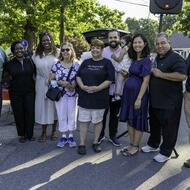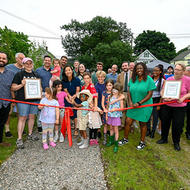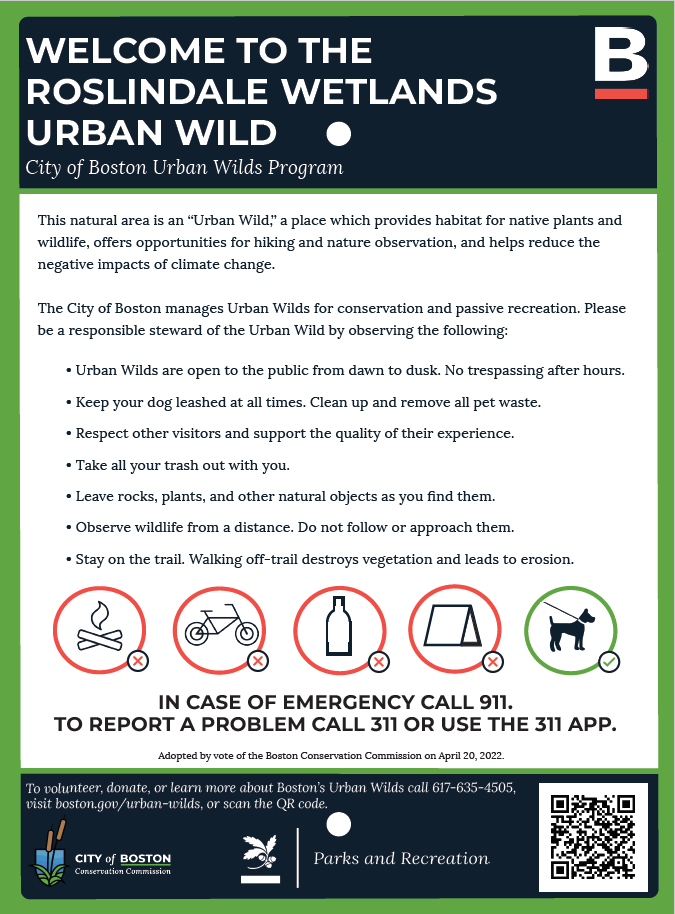Urban Wilds program
Urban wilds are an essential part of the City's open space system. They play an important role in Boston by lessening the impacts of climate change.
Boston's natural landscape once looked very different than it does today. Salt marshes covered most of East Boston and lined Dorchester's shoreline. Meadows dotted the hilltops of Roxbury. Pristine streams flowed through Hyde Park and West Roxbury. Over time, urbanization and human activity altered Boston's natural landscape. Pieces of these ecosystems still exist throughout the City and offer a glimpse into the natural world. These areas are known as urban wilds.
News and Announcements
NewsEvents
About the program
The City of Boston manages and takes care of 29 urban wilds across our neighborhoods. These urban wilds offer a peaceful break from Boston’s urban environment. They serve as outdoor classrooms for children and adults to learn about nature and provide habitat to native plants and animals. Additionally, urban wilds perform many ecological services, such as:
- storing floodwater;
- filtering stormwater run-off;
- producing oxygen; and
- reducing the "urban heat island" effect.
- protect City-owned urban wilds and other natural areas from threats such as development, encroachment, and other uses that may harm their natural character;
- manage and maintain City-owned urban wilds and other natural areas to preserve their ecological value;
- promote conservation, passive recreation, environmental education, and other similar uses at City-owned urban wilds;
- develop administrative, fiscal, and programmatic resources to ensure ongoing, long-term maintenance and management of City-owned urban wilds and other natural areas; and
- advocate for the long-term protection and stewardship of other urban wilds and natural areas that are not currently owned by the City.
Urban Wilds by neighborhood
Dorchester
From Fernald Rock to Geneva Cliffs
East Boston
From the Rockies to Condor Street
Hyde Park
From Sherrin Woods to the banks of Mother Brook
Jamaica Plain
From Nira Rock to Allandale Woods
Mattapan
From Gladeside to the Mattahunt Woods
Mission Hill
From open meadows to forested hillsides
Roslindale
The Roslindale Wetlands
Roxbury
From Buena Vista to Rockledge
West Roxbury
From Dunbarton Woods to Rivermoor
Urban Wild Rules
On April 20, 2022, the Boston Conservation Commission, which owns and co-manages most of the city's Urban Wilds, voted to approve rules for the public to use these natural spaces. Please be a responsible steward of the Urban Wilds by observing the following:
- Urban Wilds are open to the public from dawn to dusk. No trespassing after hours.
- Keep your dog leashed at all times. Clean up and remove all pet waste.
- Respect other visitors and support the quality of their experience.
- Take all your trash out with you.
- Leave rocks, plants, and other natural objects as you find them.
- Observe wildlife from a distance. Do not follow or approach them.
- Stay on the trail. Walking off-trail destroys vegetation and leads to erosion.
How to get involved
Get involvedUrban Wilds history
The Boston Urban Wilds Initiative (UWI) has its roots in the environmental movement of the 1970s. In 1976, the Boston Redevelopment Authority (BRA), which is now the Boston Planning & Development Agency (BPDA), published a landmark document called Boston's Urban Wilds: A Natural Area Conservation Program.
This document inventoried 143 areas in the City and offered recommendations for Boston's remaining natural areas. This included both privately- and publicly-owned land.
In response to this report, the Boston Natural Areas Fund (BNAF) was incorporated in 1977 as a nonprofit organization to work with the city and state agencies to secure the inventoried urban wilds. With BNAF assistance, the City acquired more than 48 acres of land. BNAF, in cooperation with the Massachusetts Audubon Society, developed environmental educational programs at several urban wilds to foster understanding and proper use of these sites. Despite heightened concern, accelerated development continued to encroach upon the numerous pristine, unprotected wilds.
In 1990, BNAF issued a second call to arms with an updated urban wilds report documenting the loss of several important sites and stressing the need for increased protection of privately-owned natural areas. To confront stewardship challenges outlined in the report, the Boston Youth Clean-up Corps (BYCC) was enlisted to provide regular clean-up and vegetation control in the summer months while the Parks Department's Maintenance Division supplied some spring and fall support. More recently, neighborhood, corporate, and non-profit groups have also been recruited for clean-ups and special projects.
Despite supervision by the Parks and Recreation Department since 1989, consistent stewardship remains a challenge due to limited resources and/or a lack of grass-roots support. Furthermore, with the exception of properties under Boston Conservation Commission and Parks Department jurisdiction, urban wilds under city and private ownership are continuously threatened by potential development.
Besides the Parks Department and Conservation Commission, the MA Department of Conservation and Recreation (DCR) has also aggressively sought to protect significant parcels of land. Large sites identified in the 1976 BRA report, such as Sawmill Brook (Brook Farm) in West Roxbury and the Belle Isle Marsh Reservation in East Boston, are now owned by the DCR, as are a series of open spaces along the Dorchester shoreline and Neponset River. These acquisitions provide permanent protection to the city's largest and most important remaining habitats.





